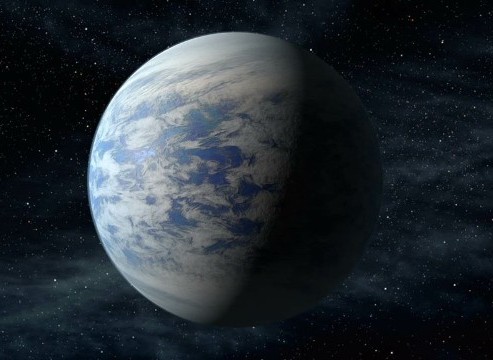Hunting for habitable Earth-like planets just got easier
 Washington, Dec 5 : Scientists researching for new, habitable worlds have found that Pale Blue Dots shows where - and when - infant Earths are most likely to be found.
Washington, Dec 5 : Scientists researching for new, habitable worlds have found that Pale Blue Dots shows where - and when - infant Earths are most likely to be found.
The scientists from Cornell University's Institute found that on young worlds the Habitable Zone - the orbital region where water can be liquid on the surface of a planet and where signals of life in the atmosphere can be detected with telescopes - turns out to be located further away from the young stars these worlds orbit than previously thought.
Ramses M. Ramirez said that the increased distance from their stars means these infant planets should be able to be seen early on by the next generation of ground-based telescopes and they are easier to spot when the Habitable Zone is farther out, so we can catch them when their star is really young.
Moreover, say the researchers, since the pre-main sequence period for the coolest stars is long, up to 2.5 billion years, it's possible that life could begin on a planet during its sun's early phase and then that life could move to the planet's subsurface (or underwater) as the star's luminosity decreases.
The study also found that during the early period of a solar system's development, planets that end up being in the Habitable Zone later on, when the star is older, initially can lose the equivalent of several hundred oceans of water or more if they orbit the coolest stars.
However, even if a runaway greenhouse effect is triggered - when a planet absorbs more energy from the star than it can radiate back to space, resulting in a rapid evaporation of surface water - a planet could still become habitable if water is later delivered to the planet, after the runaway phase ends.
The study will be published in Astrophysical Journal Letters. (ANI)